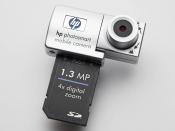Hewlett-Packard and Compaq:In May 2002, Hewlett- Packard (HP) and Compaq announced a merger that led to the creation of a company with revenue of around $75 billion and over 155,000 employees in over 160 countries. The merger faced opposition from the HP board as well as Compaq employees. In the case of HP and Compaq, the pre-merger strengths, weaknesses, opportunities and threat (SWOT) analysis revealed the potential competitive advantage that would result from integration. Besides providing an economy of scale advantage, the company would have the largest number of service professionals. Creating an integration plan at HP began with the announcement of the board for the combined companies and defining the basic organizational structure. Executives from both companies worked on the long-term goal of strategic integration while HP's Webb McKinney and Compaq's CFO Jeff Clarke worked with the legal and HR staff to ensure that guidelines were established to ensure compliance and prevent "unauthorized execution" (Burgelman & McKinney, 2006, p.
8).
The integration team defined processes, formulated goals and timelines for the senior executives to monitor the company's success. They also used a tight selection process and came up with a group of 800 individuals from both companies called "named but not announced" who were also given legal advice about the merger and their roles. These individuals were responsible for decision-making on issues relating to: employee selection, workforce reduction, titles, salary and evaluations. Compaq and HP also awarded retention bonuses to about 8,200 employees before the merger; only 10% were from the executive level and 95% of them stayed. HP also set up a communication portal called "@hp" which was operational from day one (Craven, 2004). HP also instituted "Fast Start"- a best practice for integrating culture and providing vital information about the new plan (Craven, 2004). This was mandatory...


